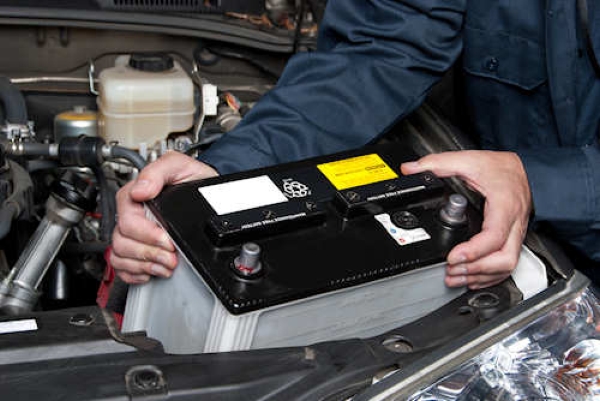
Battery Overview:
Most cars use lead-acid batteries to provide the high power necessary for starting. Lead-acid batteries are actually one of the first types of battery invented and have been in use since the 19th century. Lead-sulfuric acid chemistry is typically used for automotive applications. The lead electrodes sit in a liquid electrolyte consisting mostly of sulfuric acid. Battery failure for these types of batteries usually occurs from the deposition of insulating lead-sulfate (PbSO4) on the metal electrodes, preventing current flow and impeding the electrochemical reaction. Although car batteries are obviously rechargeable, these thick films will prevent the reverse chemical reaction necessary to recharge it.
Usually, car batteries need to be changed every four years. Failure to start the car may be a symptom of a dead battery. Cold weather can also reduce its lifetime. When it’s time to replace your battery, ensure you’ve found an appropriate battery replacement. A good idea would be to take your old battery with you when you are shopping to make sure that your new battery is the correct size (You can also return the old battery to get back its cash deposit). Car batteries are very hazardous to people and the environment. As a result, places that sell batteries will ensure the proper disposal of the old unit.
Time to Change the Battery:
Before preparing to change your battery, make sure your car is off. Keep in mind the corrosive nature of the battery’s materials and wear safety eye-wear and gloves. Make sure that there are no flame/heat sources nearby. Obviously, do not smoke while changing your battery.
Locate the negative terminal of your battery (the minus sign), and remove the cable clamp from it with a wrench. It is important to remove the negative terminal first, to prevent possible shorting of the battery to your car during removal. Next, locate the positive terminal (the plus sign).
Remove any other screws or clamps that may be securing the battery in place. Once this is done, lift the battery out carefully. Take care to clean the battery tray of any debris or residue from the battery’s contents. In the case of solidified sulfur compounds, a simple solution of water and baking soda should remove it.
Insert the new battery. Attach the positive terminal first, then the negative terminal. To prevent corrosion on the terminals, apply a small amount of lithium grease or Vaseline.
As discussed earlier, the used battery contains dangerous materials not suitable for disposal in the trash. Return the used battery to the store where you bought the new one- the old battery’s deposit will usually be deducted from the purchase price of the replacement.

